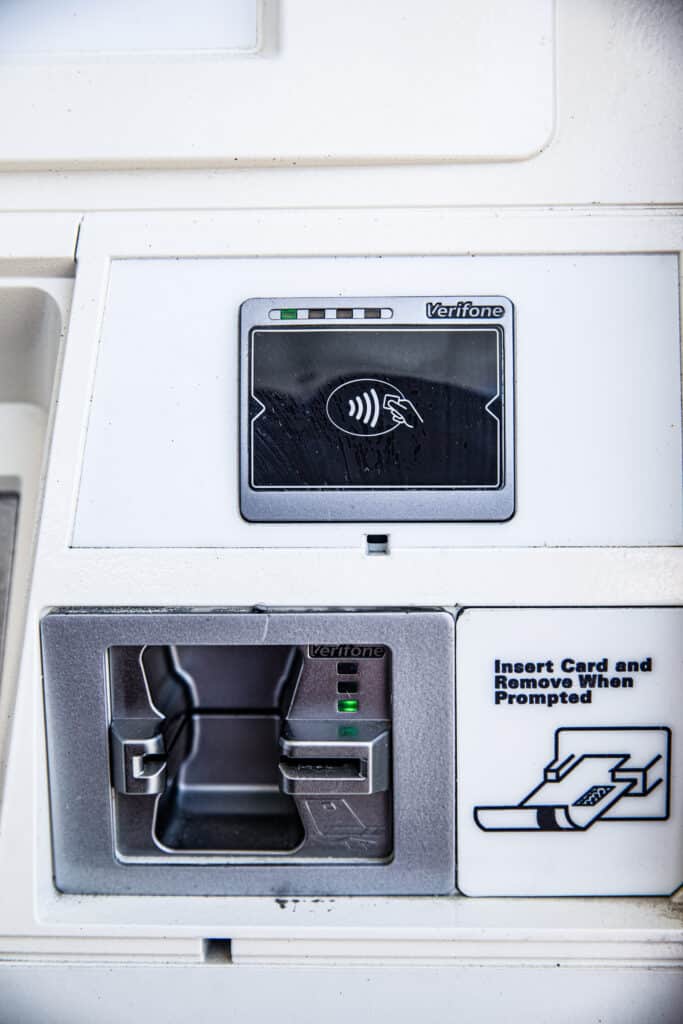As you inspect the ever-evolving landscape of compliance automation, a standout trend that’s quickly leveraging modern technology and innovative practices is the emphasis on continuous monitoring. In an age where regulations morph almost ceaselessly, and non-compliance could result in severe repercussions like monumental fines and a loss of customer trust, continuous monitoring has emerged as a proactive strategy to assess the ordeals of data security controls in real-time. The year 2023 predicts a witness of several such transformative trends in compliance automation, from the ubiquitous use of AI and ML to automate and predict risks, a renewed focus on data privacy, integrating compliance automation into business operations for improved efficiency, and scaling compliance to transcend geographical boundaries. Not overlooking ‘control mapping’, anticipated to be a game-changer simplifying the attainment of multiple compliance certifications. These transformative trends might indeed be a panacea for companies striving to stay aligned with the latest compliance standards and regulatory controls.

Rise of Compliance Automation
Understanding compliance automation
Compliance automation is an emerging concept that helps companies sidestep penalties, lower their risk footprints, and streamline adhesion to compliance standards by obviating the need for manual compliance tasks. In essence, it is an effective way of ensuring that your business adheres to required regulations while allowing you to concentrate on its core functions.
Need for compliance automation in businesses
Modern businesses operate in a complex regulatory environment. Managing this intricate web of regulations can be a daunting task that takes up valuable time and resources. Compliance automation is a response to this need, ensuring that businesses adhere to regulations while saving time, increasing efficiency, and focusing more on achieving their business objectives.
How compliance automation helps in avoiding fines and reducing risks
Compliance automation eliminates the complexities and potential inaccuracies associated with manual compliance processes. It reduces the likelihood of non-compliance and the resultant fines by automating and streamlining adherence to regulations. It also helps in reducing operational hazards and managing risk through timely identification and mitigation of potential risks.
Key Trends in Compliance Automation
Overview of emerging trends
Numerous compliance automation trends are emerging presently. The top five to watch for in 2023 are the inclusion of AI and ML in compliance automation, an increased emphasis on data privacy due to burgeoning data collection and processing, continuous monitoring, integration of compliance automation with business processes, and scaling compliance beyond borders.
Importance of monitoring these trends
Monitoring these trends is crucial for businesses as they provide insights into upcoming changes and advancements in compliance automation. They help businesses to stay ahead of the competition, enhance regulatory compliance, and maintain their reputation.
How these trends are transforming compliance management
These trends are revolutionizing compliance management by integrating technology, increasing efficiency, and introducing a proactive approach to addressing compliance issues. This not only reduces the risk of non-compliance but also opens up a wealth of opportunities for businesses.
Artificial Intelligence and Machine Learning in Compliance
Role of AI in compliance monitoring
AI plays a significant role in compliance monitoring by automating tasks that were traditionally done manually. This not only saves time and resources but also reduces errors and increases effectiveness. With AI, businesses can scan for potential compliance issues in real-time and take proactive steps to mitigate them efficiently.
Use of machine learning in making predictions
Machine learning is used to analyse past trends and make predictions about potential risks that may occur in the future. This predictive ability enables businesses to proactively manage risks and ensure continuous compliance with applicable rules and regulations.
Impact of AI and ML on compliance automation
AI and ML have a tremendous impact on compliance automation. By automating tasks and making predictive analysis, they increase efficiency, reduce the risk of non-compliance, and save time and resources. They also help businesses to identify and mitigate potential risks proactively.
Data Privacy in Compliance Automation
Rising significance of data privacy
With the explosion of data collection and processing activities, data privacy has become increasingly important in compliance automation. Protecting data from unauthorized access, use, disclosure, disruption, modification, or destruction is essential to maintaining customer trust and avoiding hefty fines and penalties.
Has changing data collection and processing affected compliance?
The surge in data collection and processing has indeed affected compliance. It has made it more complex and challenging as new regulations are being introduced to protect data privacy. There’s a growing need for businesses to be more aware of their data collection and processing practices and ensure that they comply with the various data protection regulations.
Steps for businesses to ensure data privacy for compliance automation
For businesses to ensure data privacy in compliance automation, they must identify and understand the data they hold, ensure data is collected and processed ethically and legally, and implement strong security measures to protect their data from breaches and unauthorized access. Additionally, they ought to establish a culture of data privacy amongst employees and regularly update their data privacy policies to fit with current regulations.

Continuous Monitoring: A Key Trend in Compliance Automation
What does continuous monitoring entail?
Continuous monitoring involves constant observation and evaluation of a business’s internal data security controls. This provides real-time updates of any potential risks and threats, which in turn allows businesses to act swiftly and mitigate these risks before they escalate.
Benefits of continuous monitoring for compliance
The benefits of continuous monitoring for compliance are numerous. It enhances the ability to identify and respond to risks promptly, removes the redundancy of periodical checks, reduces the likelihood of non-compliance, and ultimately, builds a more robust and resilient compliance structure for businesses.
Real-time assessment of internal data security controls
Real-time assessment of internal data security controls is enabled by continuous monitoring. This real-time visibility helps businesses proactively identify potential security threats and take quick action to mitigate them. This approach is more efficient and effective in managing risks compared to traditional methods and is key to fostering a culture of compliance within the organization.
Integration of Compliance Automation with Business Processes
Need for integration
Integration of compliance automation with business processes is a necessity. The intertwining of these two entities helps cut down on the risks associated with non-compliance, such as hefty fines, reputational damage, and loss of customer trust. It also benefits enterprises by Improving workflow efficiency and simplifying the compliance process.
Reducing risks with integrated compliance
Integrated compliance reduces the probability of missing essential compliances and hence, the risks associated with non-compliance. It provides a holistic view of the business’s compliance status, aids in setting clear compliance goals, and allows for consistent monitoring and management of adherence to these goals.
Improvement in workflow efficiency
Integrating compliance automation with business processes significantly improves workflow efficiency. By automating and streamlining compliance tasks, businesses can dedicate more time and resources to other critical areas. This way, they can accelerate their productivity and growth while maintaining compliance.

Scaling Compliance Beyond Borders
Regulations across geographies
As businesses expand to serve global markets, they also need to adhere to varying regulations across geographies. These regulations can vary greatly, adding a layer of complexity to the already arduous task of ensuring compliance.
Challenges of scaling compliance
The primary challenge of scaling compliance is understanding and adhering to the diverse sets of rules and regulations across different regions. This can lead to increased costs and resources, making it a complex task. Despite these challenges, scaling compliance is an essential aspect of expanding businesses that cannot be ignored.
Compliance standards and differences across regions
Compliance standards vary extensively across regions, primarily due to the differing cultural, economic, and political climates. For example, data protection laws in the European Union are far more stringent compared to other regions. Recognizing and understanding these differences is crucial for businesses wanting to expand their global footprint.
Adapting to Constantly Changing Compliance Standards
Keeping up with amendments
The dynamic nature of compliance standards necessitates continuous tracking of alterations and updates. Implementing these amendments promptly is key to remaining compliant and avoiding penalties that can emerge from non-compliance.
Consequences of non-compliance
Non-compliance can result in various unfavourable outcomes, including financial fines, litigations, reputational damage, and loss of customer trust. Businesses must prioritize compliance to avoid such consequences and maintain their performance and reputation.
Regulatory controls management
regulatory controls management is about creating a structured approach to align business operations with regulatory requirements. It not only ensures compliance to current regulations but also provides businesses with the flexibility to adapt to future regulatory changes.
Compliance Automation Solutions for Businesses
Benefits of compliance automation solutions
Compliance automation solutions offer a cornucopia of benefits including enhancing the efficiency in meeting compliance requirements, reducing the likelihood of non-compliance and its associated fines, and the ability to keep up with changing regulations. Moreover, it frees up time and resources allowing businesses to focus more on their core operations.
Selection criteria for compliance automation tools
Selecting the right compliance automation tool is key to effective compliance management. Businesses must consider factors such as the tool’s ability to adapt to changing regulations, ease of use, integration with existing systems, scalability, and, most importantly, its ability to meet the business’s unique compliance requirements.
Case studies of effective compliance automation
Case studies of effective compliance automation illustrate the practical benefits of these tools. These cases show a reduction in risk and non-compliance due to timely identification and mitigation of potential issues, improvement in efficiency by reducing manual compliance tasks, and better data management and security.
Control Mapping in Compliance Automation
Understanding control mapping
Control mapping is a method of identifying commonalities between various regulatory frameworks. It helps enterprises simplify their compliance process by delivering a clear view of overlapping and unique requirements.
How control mapping simplifies compliance certifications
Control mapping simplifies the process of obtaining multiple compliance certifications by eliminating the need to manage each one individually. It also enables businesses to identify gaps in their compliance procedures, thereby reducing the risk of non-compliance.
Predicted popularity of control mapping in 2023
Given its ability to simplify the compliance process and reduce the risk of non-compliance, control mapping is expected to gain in popularity in 2023. With the continuous evolution of regulatory frameworks, tools like this will be invaluable for businesses looking to automate and streamline their adherence to compliance requirements.
